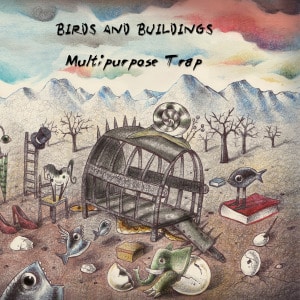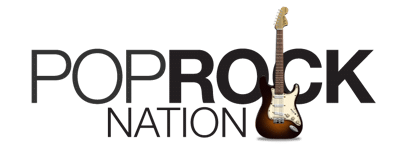Artist: Birds and Buildings
Album: Multipurpose Trap
Birds and Buildings classify their second album Multipurpose Trap as “jazz-rock, progressive-rock, zeuhl, rock in opposition”, which seems about right for those of you who’ll understand all that. If you’re stuck after jazz-rock, that’s still a useful starting point, and I’m happy to  add that King Crimson (’70s and ’80s versions both) seems like a significant influence. Their music is mostly high-energy; their five-piece lineup includes a trumpeter, a violinist, and a sax/flute/clarinet player along with guitars and keyboard. Maybe 85% of each song, on average, is instrumental passages, which I have a prejudice against. My favorite albums are usually ones where I love the singer and/or the lyrics, and the few vocals here — which are certainly nicely done — are either vague mutterings that happen to take place on musical notes, or brief telegraphic melodies that hop large odd intervals. But there’s too many interesting things going on instrumentally for me to complain. Instead of vocal hooks we get keyboard hooks or saxophone hooks, often blatantly catchy ones. And if the time signatures have 3, 5, or 6 beats per measure as often than 4, they feel entirely natural and bouncy about it.
add that King Crimson (’70s and ’80s versions both) seems like a significant influence. Their music is mostly high-energy; their five-piece lineup includes a trumpeter, a violinist, and a sax/flute/clarinet player along with guitars and keyboard. Maybe 85% of each song, on average, is instrumental passages, which I have a prejudice against. My favorite albums are usually ones where I love the singer and/or the lyrics, and the few vocals here — which are certainly nicely done — are either vague mutterings that happen to take place on musical notes, or brief telegraphic melodies that hop large odd intervals. But there’s too many interesting things going on instrumentally for me to complain. Instead of vocal hooks we get keyboard hooks or saxophone hooks, often blatantly catchy ones. And if the time signatures have 3, 5, or 6 beats per measure as often than 4, they feel entirely natural and bouncy about it.
Multipurpose Trap’s shorter songs, from 2 to 6 minutes, are generally the poppiest, for a jazz/ prog/ zeuhl definition of “pop”. Horse-Shaped Cloud feels carnivalesque; the Dumb Fish goes between a Mission Impossible sinister chase feel and a more open-minded world’s conception of “peppy jingle”. Miracle Pigeon is partly a folk dance for Eastern Europeans with widely varying numbers of legs, partly an emergency summons to town square by their robotic overlords and Valkyrie guards. East is Fort Orthodox is slower, grander, eerier, the most Court of the Crimson King-feeling track (but also the one with the most prominent vocals and prettiest violin playing). Secret Crevice feels like one of Miles Davis’s most aggressive jazz-rock lineups simultaneously taking the piss out of opera and movie fight-scenes.
Tragic Penguin, at 7 minutes, introduces itself as slow and mystical and lofty, with glittering sustained Chick Corea-like keyboards, high droning woodwinds, and bass lines built on playing the same note or chord several times in a row before moving. When it speeds up, and adds brief vocals, it feels more like a Frank Zappa piece, but still a basically grand and pretty one. Catapult is 10 minutes of adrenaline, cartoon chase sequences interrupted by moments where the instruments corner each other, and stomp around in intimidating poses, before one of them spots a chance to make a break for it and start the chase anew through different terrain. Abominable Pelican comes across in parts as a pleasant brainwashing attempt by happy mystical nutters, and in parts as the grand quasi-symphonic jazz that washes over them during their worship rituals.
It turns out, then, that while part of why I love music with words is that I want to sing along with those words, another part is simply that vocals are a convenient tool for providing *personality*. Sometimes they sing and sometimes they don’t, but Birds and Buildings always have plenty of that.
– Brian Block
To see the rest of our favorites, visit our Favorite Albums of 2013 page!
